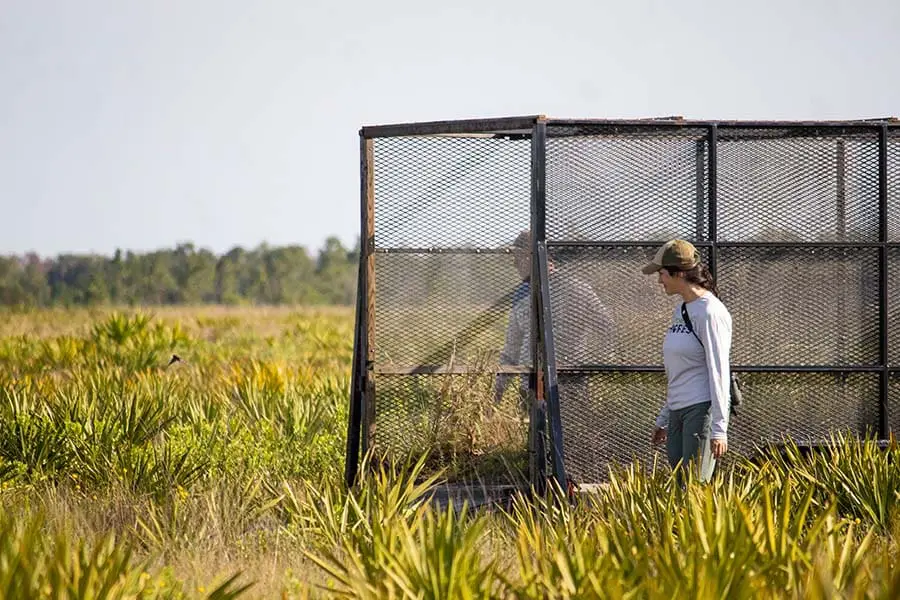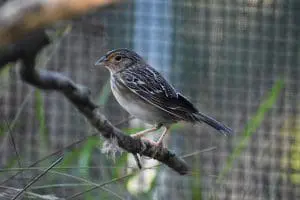

Nearly 50 sparrows were or will be released onto their natural range to help this imperiled species.
We are happy to report that our breeding season for critically endangered Florida grasshopper sparrows has concluded and was wildly successful! Forty-seven birds were released or are soon to be released into their natural range to boost the population of this species.
Our Zoo is part of a collaborative conservation effort to save this species with the Florida Grasshopper Sparrow Working Group, Florida Fish and Wildlife Conservation Commission, United States Air Force, U.S. Fish and Wildlife Service and Archbold Biological Station.
Florida grasshopper sparrows are found only in a few areas of Central and South Florida. In fact, in 2021, just over 100 members of their species were found in their natural range.

An adult sparrow called Landon.
Breeding season began back in the spring of this year, when the males began the process of signaling their interest to the females to breed through a buzzing sound, and nest building and egg laying followed. After several weeks, our first chicks were hatched – and that was just the beginning of this amazing success story.
The newly hatched chicks stayed with their parents for 21 days, after which they were moved to another behind-the-scenes habitat at the Zoo and monitored to ensure their wellbeing before release. Once matured and medically cleared, each clutch (or group) of chicks was released onto the prairie in which populations of Florida grasshopper sparrows live in their natural range.

A newly-hatched sparrow.
Once the chicks were separated, their parents would restart the breeding process of buzzing, nest building and egg laying! Each clutch ranged in size – our largest group consisted of five eggs and our smallest was two eggs. One of our pairs alone produced 20 offspring during the course of breeding season!
A surprise happened when Florida Fish and Wildlife Conservation Commission reached out to us looking to place two orphaned week-old chicks who had been found in their natural range abandoned by their parents. Fortunately, at that time, we had a clutch of chicks that were similar ages, and we were able to take them in. Even more fortunately, the parents didn’t miss a beat and began feeding them just the same as their own chicks. These two are projected to be released within the next few weeks!
Our first breeding season for this species was extremely successful, and that’s in part because of our amazing conservation team taking care of them. Kelly Currier, Conservation Coordinator, says the success was ultimately because the sparrows had everything they needed to feel safe. “Reproduction takes a lot of energy for animals to do,” said Kelly. “If they didn’t have enough of the right plants, space, food or sounds, they may not have reproduced as frequently.”
Kelly went on to mention how important this accomplishment is to the future of this critically endangered species. “Our success means we can further increase genetic diversity on the prairies and help increase the numbers even quicker than before. The sparrows desperately need this boost due to their dramatically low numbers in the past few years.”
So, what’s next for our Florida grasshopper sparrows? Breeding season should start back up in the spring. Most of our current breeding individuals will stay with us for the next season but depending on the need to improve the species’ genetic diversity, we may get new sparrows during the breeding off-season. We hope to continue our success for years to come to help this imperiled species!
Brevard Zoo is an independent, not-for-profit organization that receives no recurring government funding for our operating costs. Your generous support enables us to continue to serve our community and continue our vital animal wellness, education and conservation programs.